dzata:
the institute of technological consciousness
Contents
the case for
an institute of technological consciousness
enter the
institute
on language,
languaging, wind technology, abalozi
nabashwashwathi
![long-distance communication device, dzata prototype (date unknown) taxonomy of the drum fieldwork based on original dzata drum (Ngomalungundu)]() technology and
its african past
technology and
its african past
a recipe for
shapeshifting
collective
(animal, human and plant) consciousness and shapeshifting
data centres
and streams of consciousness
on trees
indigene,
technology and the question of their knowledge in devices
the institute,
africa, its technological futures
indexing
objects of power

references and credits

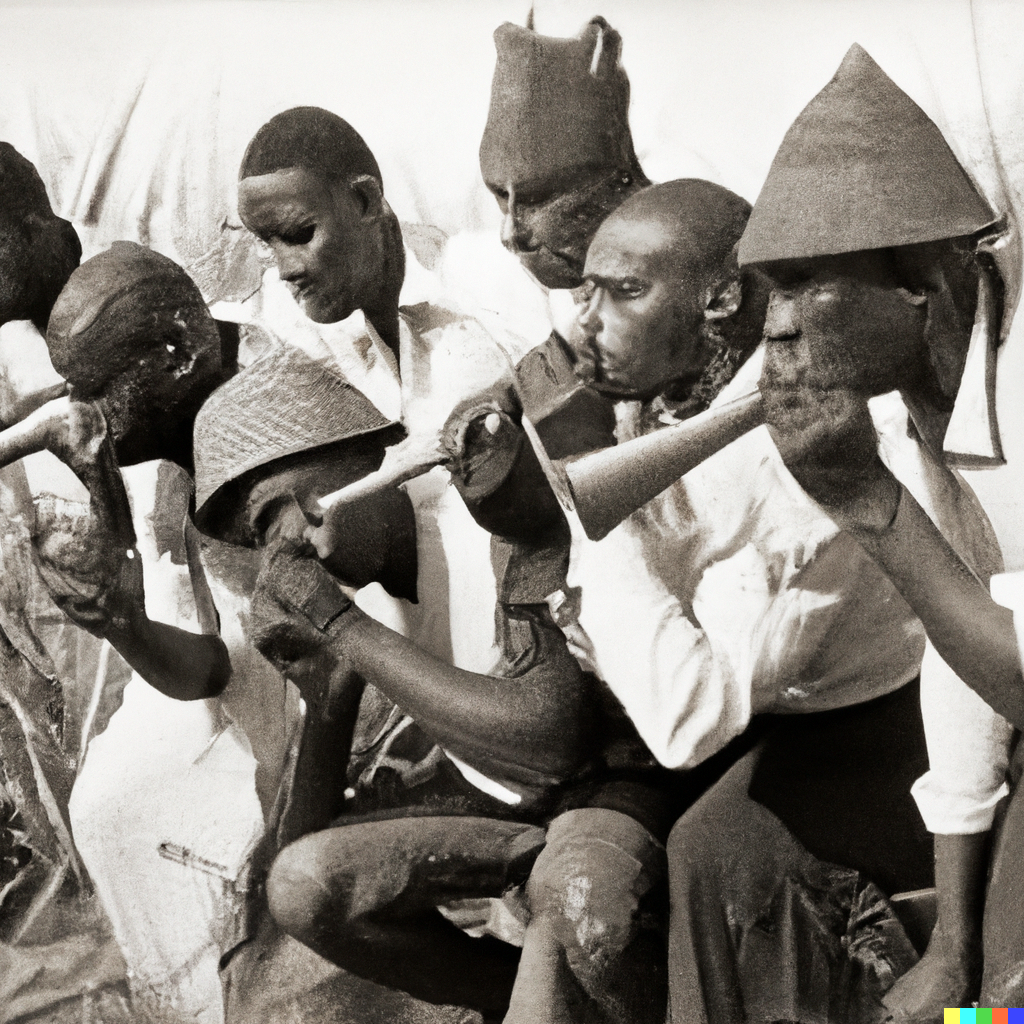

The case for the Institute of Technological Consciousness
10.03.1409
What follows herewith is an assembly of ideas that are part factual, somewhat fictive and speculative with the aim of coalescing the expanded fields of technology from this place. In saying ‘this place’, I am referring to DZATA: The Institute of Technological Consciousness. In saying ‘this place’, I am also speaking of the DZATA or DZATE (depending on one’s accent) region, not too far from me is Mapungubwe which are both part of the greater Shashe expanse. Even though I have not yet reached the edge of this expanse, I have however, encountered several trading peoples from those plains. Speaking of which, this is a curious region said to have an unexpectedly high magnetic forcefield….a curiosity which I have yet to investigate.
I am a member of a wider community of wanderers and wonderers working with and in the history of technological thinking and technological making across (what will become) the African continent.
My calling to this position was consecrated on a suspended hill in Ulundi, eleven days downwards of Masvingo.
At present, it is important to expand the intersecting fields of practice that ground technology within our socio-cultural milieu. It is increasingly clear to us that to think within the range of computation, software and devices simply short-circuits the deep and lateral field of technologies from this place. What we want to do is to think laterally across the fields of transcendental practices, ancient material cultures (what we call ‘objects of power’), indigenous know-ledge systems pertaining to animal and plant life, amongst others.
Take, for example, traditional healing systems using herbs- this would fall somewhere in the ambit of medicine and chemistry. However, to fully contend with traditional healing means we need to contend with the following: how does the conjuring of base metals and botanics alter weather systems within a matter of seconds? Now, we would need a climatologist, a botanist and geologist to enter the conversation. However, they would not have the answer (if there is one). We need to turn to a transcendentalist.
Let me end with this warning: there will be spice routes, silk roads and the last iteration of such routes will be unseen yet drive every action of the seen and seeing. The destruction of said route will not be precisely accounted for.

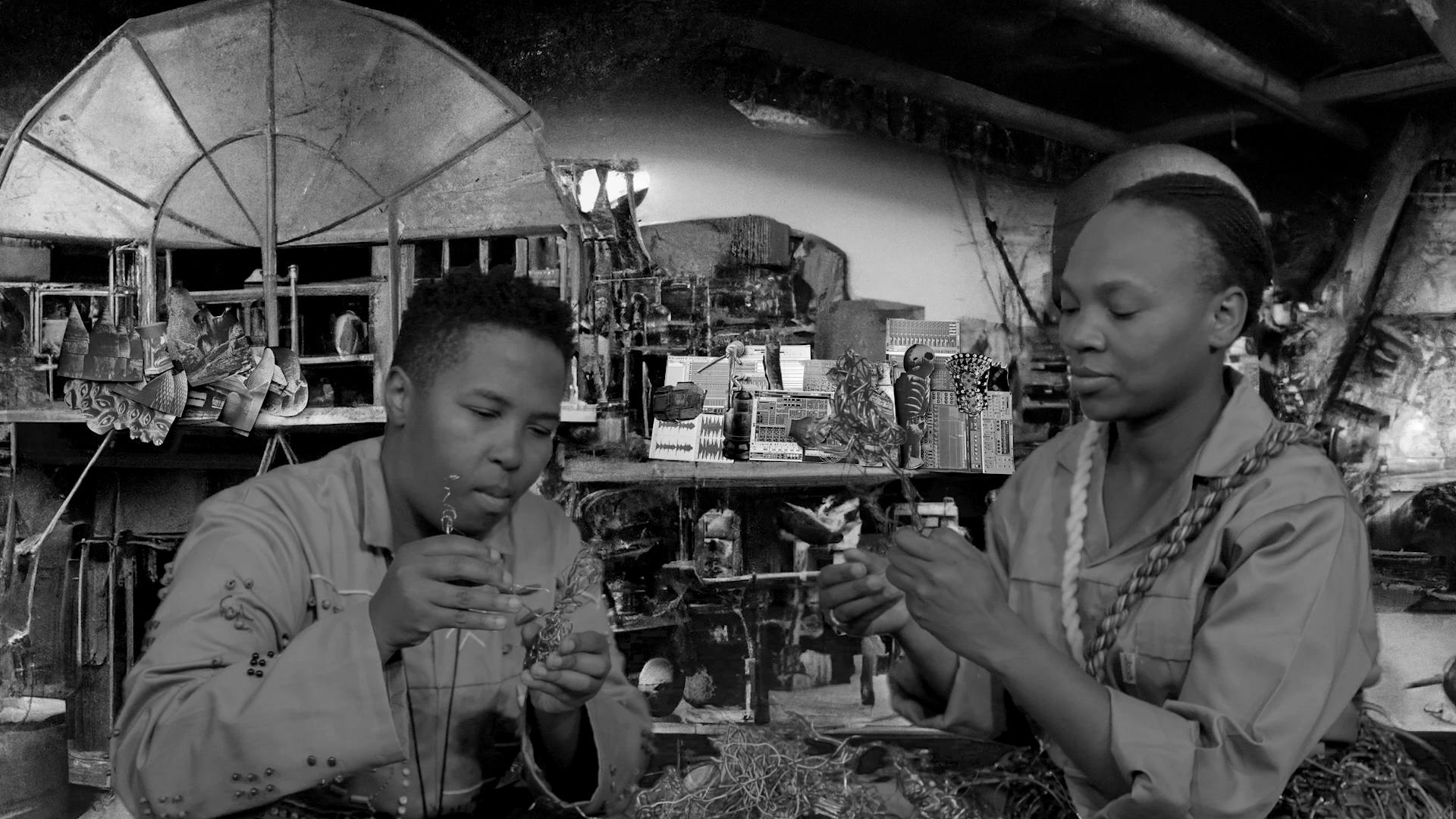
Enter the Institute
31.12.1979
Start by making a backpack which is a laboratory
which also contains the cosmos………..
The roots of a tree have informed the route of the scientists. It is said that a Sankofa bird spirit emerged and took flight from the Bijagós archipelago (a protected biosphere reserve of Guinea-Bissau) . Some speculate that this spirit bird was present at Amilcar Cabral’s dying moment on 20 January 1973,yet it is true however that the carcass of this bird was found on the 19th of January of the same year, a few kilometres from where the revolutionary was assassinated. We are drawn to Cabral’s agronomic work which cast the crop-field as a laboratory and as a place rooted in revolutionary practice.
The roots of the dense forest floor have provided the scientists with a migration route to follow, thanks to the bird. This route of wandering and wondering takes its inspiration from plant systems which have thrived in relative harmony for centuries- where the thriving of an ecosystem does not depend on the monopoly of the individual or the singular entity.
The spirit bird tells the scientists that thriving ecosystems of the archipelago reveal to us that when all plants thrive, bird life is invited and a host of other insects are invited to thrive- the thriving of the one depends on the thriving of the other. This consciousness of plant matter has densified so much that it has wandered and wondered how to transmit this consciousness to human entities. Working from the idea of a 'network of networks’ (veins on the palm of a leaf) form a micro network whereas the networks of roots under the forest soil form a macro network….. here the impetus is collaboration rather than competition.
This particular Sankofa spirit bird has been observing and following a peculiar group of men and women, all of whom are wanderers, for approximately a century now. These scientists have taken life in areas of dense metal deposits such as the copper belt, uranium-rich areas and other ores. The Sankofa spirit bird is often drawn strongly to the magnetic fields of these areas- and it is due to this forcefield that it has identified these scientists, all of whom are sanusi.



17.04.1879
The current head scientist is located in the region of Bakoni (Adam’s Calendar). Somehow the spirit bird has managed to conjure a centuries-old old form of whistling communication systemThis whistling system is part of abaLozi spiritual practice. Although, the head scientist cannot fully understand this communication system, they can piece together the central message from the bird.
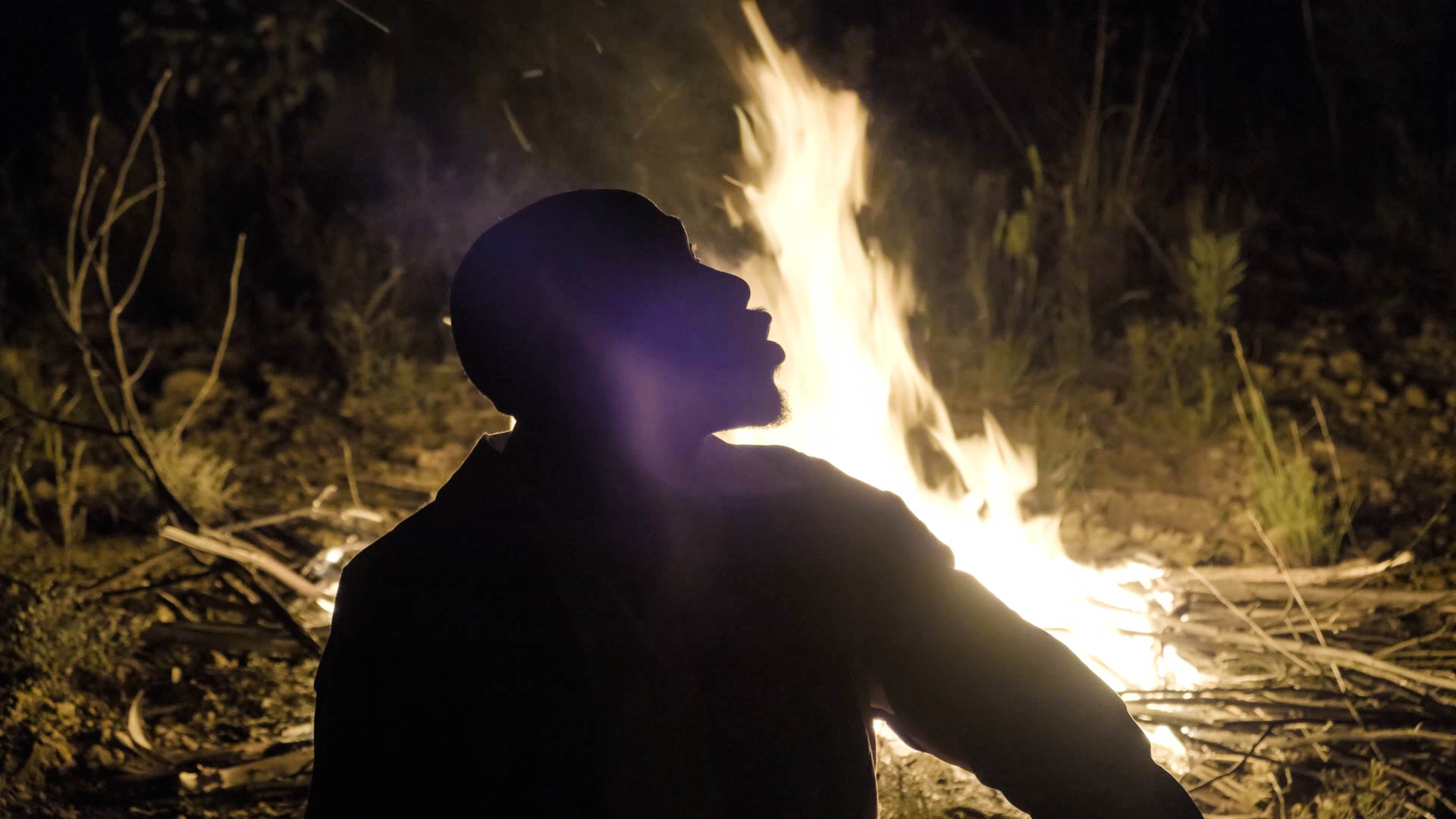
I am the SANKOFA spirit bird; the data carrier; the messenger. I am here to bring the past to you. And to bring you to the past.
I have come to alert you to others who are like you, in pursuit of the same answers. And there are even more from across the continent, who have come before you. My job as the spirit bird is to hand over the repository that they’ve built over the centuries, it is only then that I can rest and ascend in peace.
I have to lead you to a particular leaf on which the veins will show you where to go in order to meet these other sanusi with whom you will bring your collective concerns and reinvigorate a technological consciousness amongst fellow human beings.
I know we may not necessarily call this form of intergenerational and multi-dimensional communication system ‘technology’ but we suspect that an Information Age (similar to that which we saw across 11 key points of this landmass) will return to haunt your future and hope that you can slow down human ‘progress’ as a way to extend humanity’s civil nature and preserve its relationship with other living entities- as this Information Age is amongst humans' greatest threat. What are these 11 key points, you may ask?
Across 11 key points on the continent are places where people of different locations have come together and reached pivotal moments of innovation. Amongst the ruins of these key points are some critical fragments of knowledge from the deep past. Your future is incomplete without these knowledges. I might leave you before you reach all 11 but upon reaching the first site, you will not manage to resist the pull of the remaining 10.
On Language, Languaging,Wind technology
abalozi, nabashwashwathi
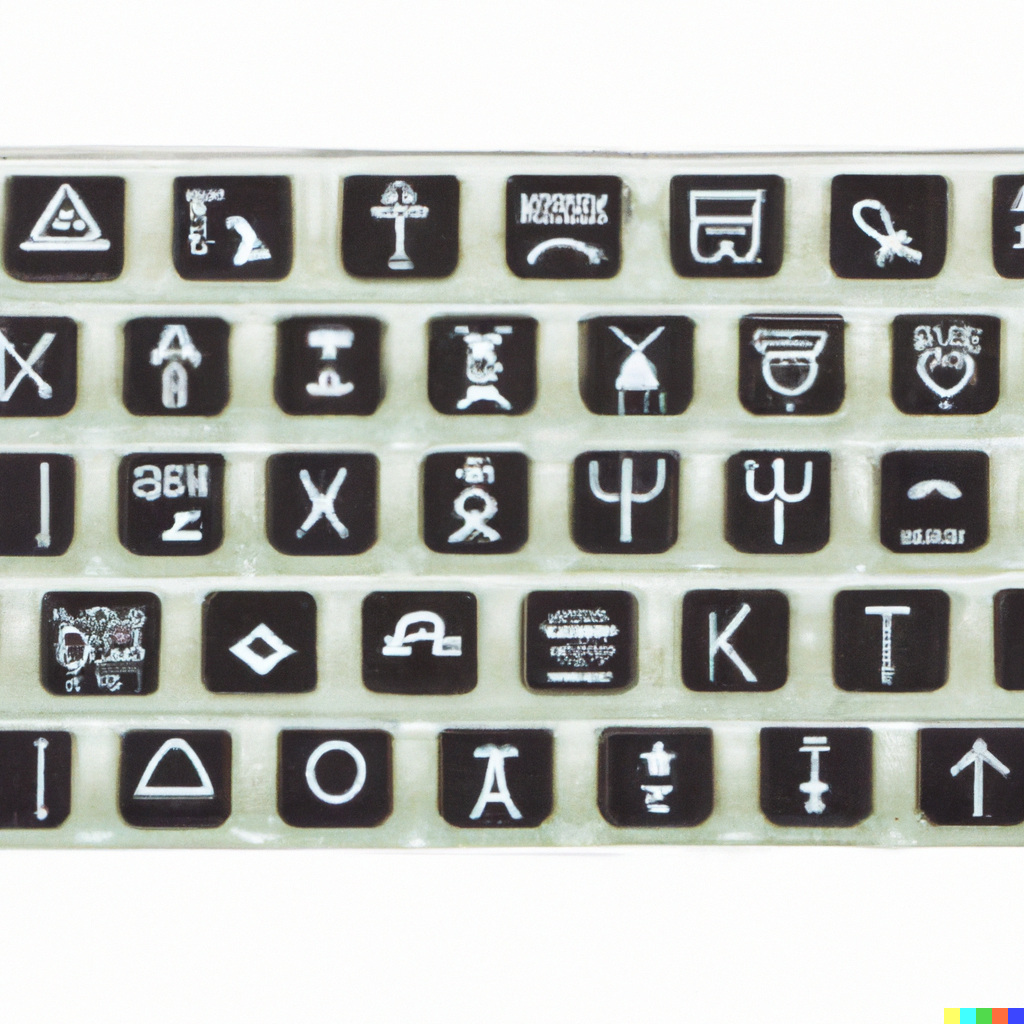
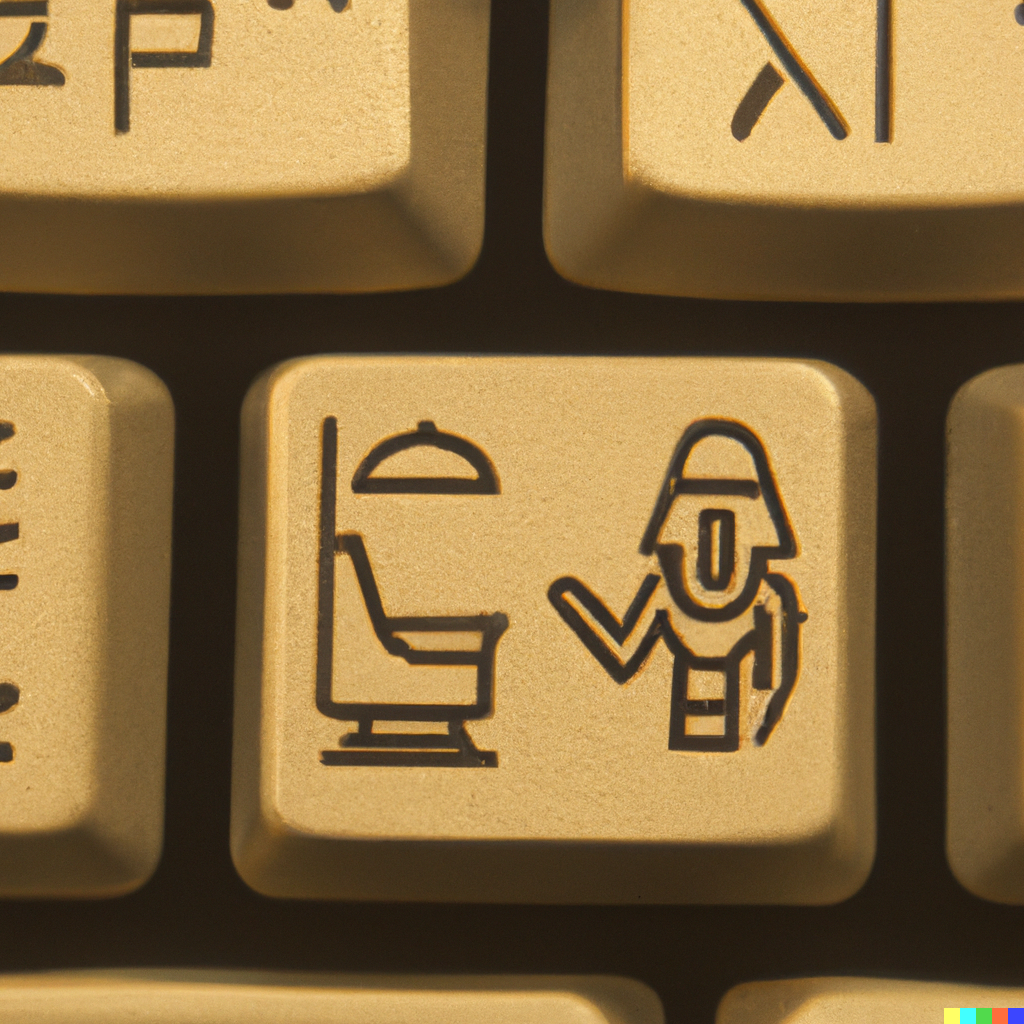
whistling, wind & resonance studies
Parallel to the development of a linguistic form, abaLozi were developing a whistling communication system that still exists today. This system exploited wind movements to carry messages across mountain ranges from one settlement to the next.
So, is it true that AI will eventually learn all languages including this one?
This corresponds well with the significance of birds in pre-colonial Zulu society. The pioneer missionary Callaway commented on the roles of birds in myths he collected, writing that, “(i)t is ‘the little birds’ which are mediators and messengers, coming with their tale of warning or instruction” from the ancestral spirits (Callaway 1868: 130). He further recollected how his Zulu teacher’s brother was well- known for his accurate prophecies through the interpretation of ‘bird talk.’ This interpretation is a direct parallel to divination through a spiritual power referred to as abalozi.
The aspects of ethnographic material illustrate the significance of air materializes as an integral aspect of the landscape. The first is the significance of birds as creatures that soar on the frictions created between landscape and wind. The second focuses on mountaintops and beaches, which were singled out as important ritual places because they were infused with metaphysical ‘tracks’ carried through the air.
If we invert a depiction a Tshidi gave Jean Comaroff, we can say that the air for the Bantu “is full of forces and powers” (Comaroff 1985: 128). Deeply embedded in Zulu cosmology and ritual practice is the significance of birds as creatures that occupy the spaces where the materiality of air is manifest. Birds are regarded as physical manifestations of the ancestors - SANKOFA is one such bird that has been sent to the past to revive it and bring it to us, or rather bring us to it (the past).
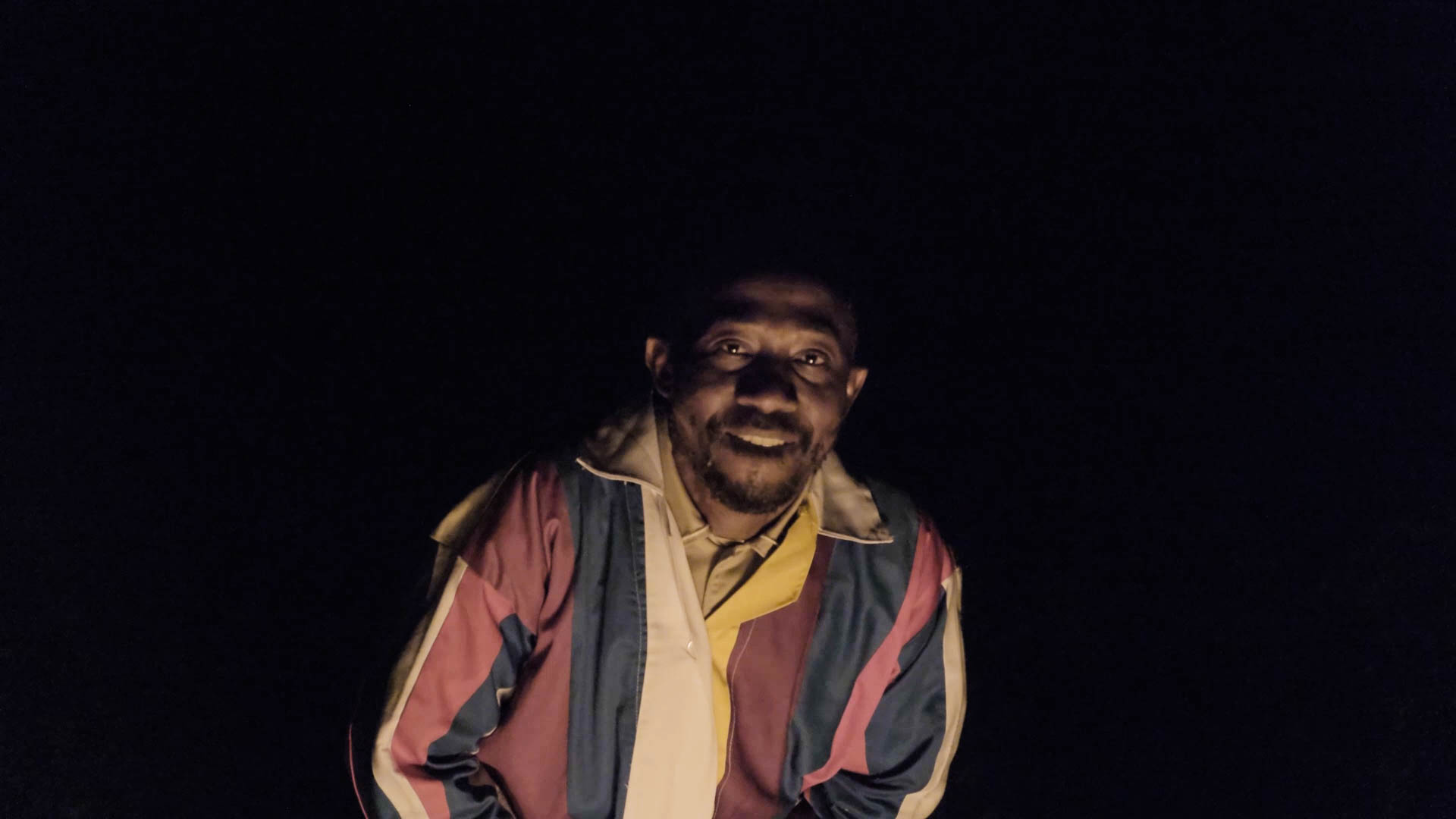
Birds soaring on the currents—a manifestation of the connections between surface and medium—reveals that the atmosphere is not an empty space but one of many surfaces in the world (cf. Ingold 2011). The Norwegian missionary H.P.S. Schreuder explained this decree, saying that Dingane’s most powerful inyanga had revealed that the crowing of cocks had caused powerful thunderstorms. From this, we can reasonably assume that the removal of chickens from the Zulu kingdom was a measure taken to secure the king’s power base. The cock was potent enough to bring about the spiritual powers associated with thunder.
Wind carries messages from the ancestral spirits. The same messages from the ancestors emerge when wind mingles with the landscape, filling the hollows of the ground with sounds as it blows through valleys, whistling as it grabs hold of mountains and caverns. On occasions the bodies of the afflicted took shape from the will to resist the power of the wind. The force and lightness of the wind shaped the force of the spirit.
The two (spirit and wind) are not only signified by the same word, umoya, they were both haptically present when the winds touched the afflicted at these places of worship. The afflicted moving in this ritual landscape were physically challenged to rise, stand, lean against the force of the wind and move forward. These were bodily motions that I started to notice influenced the atmosphere as the gathering was gradually filled with the lightness of the air and spirit.
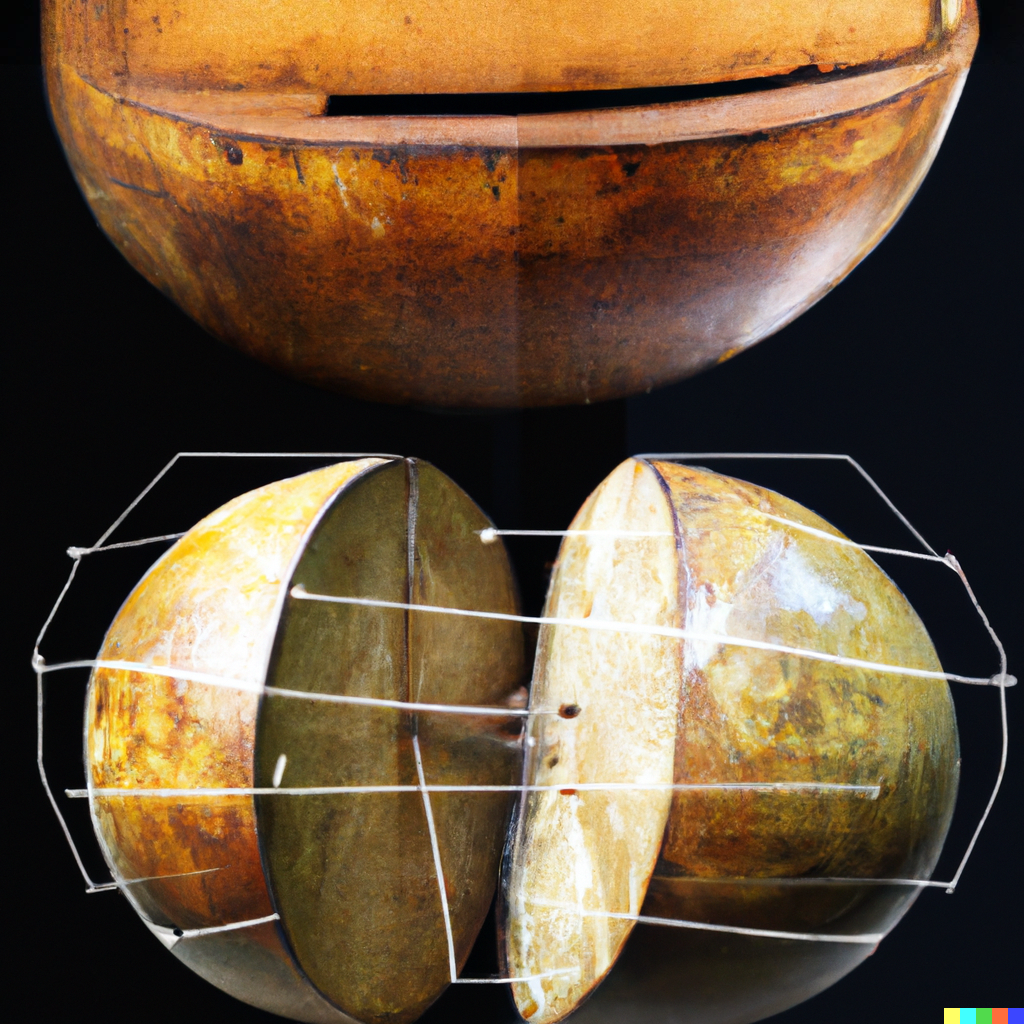
Mountains are struck relatively often by lightning and hence become infused with spiritual power from the ‘Lord-of-the-Sky.’ Mountains therefore become potentially polluting places, due to ‘tracks’ left behind by the lightning (Vilakazi 1965: 24f.).
The ‘tracks’ can also float in the air as ‘threads’ that connect people and places (cf. Ingold 2011: 121). These tracks become particularly troublesome in large cities, plagued by pollution and an abundance of people. The then well-known inyanga [herbalist] and leader of the Traditional Healers Association, Mr. Mhlongo, expressed his and the organisation’s concern with the spread of Zulu healing practices to urban street corners. In an interview regarding the umuthi street vendors in Durban he said: “They are not traditional healers, and they should be arrested for treating people on the streets where the wind blows everything onto those herbs” (The Natal Witness, November 7 ). The air could also be a medium through which witchcraft [ubuthakathi] was spread. The presence of witches and their evil deeds could not be seen, but rather sensed in the air. The Zulu “witch finders,” Krige wrote, ‘smelled out’ [ukubula] the witches.
As he danced towards the suspects, he “examine(s) them by means of his olfactory sense” (1936: 225), following the threads in the air left behind by the evil doers. The perception of witchcraft, as a substance of a negative, forceful and dark appearance, therefore has certain olfactory qualities. This finds a parallel in Khoisan notions of both wind and witchcraft (cf. Low 2007), as well as in the coastal areas of East Africa, where Parkin argues it is because smell “wafts on the wind that it is of crucial importance” in ritual contexts (2007: S41). ‘Bird-talk’ and chirping were also of spiritual importance. These sounds float in the air, bringing subjects into contact with distant spirits, places, and people. They are essential for the creation of a ritual atmosphere. In this context, it is interesting that the Nyakyusa word for “witch,” abalozi, means “the one that travels with the wind” (Wilson 1951: 91).

28.07.2017
There are other hubs that have consolidated their positions in the political economy of technology and are indeed writing themselves into technological languaging. These hubs are spread across the broader Asiatic world between Singapore, Japan, South Korea including giants such as China and we can include Russia in this equation. Here we find industries that are first and foremost committed to national identities through the free market. These antagonists to the West are mostly useful as they challenge the domination of the West. These countries are languaging their vernaculars into the world of bytes, pixels, software and cloud culture. These regionalised yet international industries are exemplary in making technologies that are alive to the urgencies of these respective locales; however, if history has taught us anything, it is that nationalisms lead humans down a lethal path. Nevertheless, we know that AI can speak Korean, Mandarin and Japanese. When will AI learn to tell us ukuthi abalozi baloza kanajni?
Izofunda nini iAI ukuphimisela amagama athi gxeka, qondisa uqweqwe kanye namanye amagama enza ulimi lwethu lihluke knezinye izilimu? Will languages such as NIIng and N/uu contend here?
An unconscious AI is only a mirror of its maker. Should we not be concerned about an internet that is intelligent only in the languages of the powerful whilst being highly ignorant to, and of, other languages of the melanated? Who should assume the responsibility to correct this violence of omission? Should it be left to governments, tech unicorns or institutions of higher education? If the future is enshrined in technology, then we cannot fully foretell the extent of risk that a biased, free market AI will bring to us. The question is: how do we make fertile ground for us as indigenous and first peoples across the globe to convene around a shared purpose for a just internet? A just internet means a just future; a just future means a just planet.
In the same way that Amilcar Cabral saw his revolutionary position as defending the earth against exploitation of soil through colonial industry, the pursuit of a just internet is the pursuit of a just and ethical future.
There must be an imagination that is inspiring enough for us to sketch a wireframe that sets forth a humane and a commons-based internet for the future. What might an internet that is built on the ontologies of indigenous peoples do to the binary number system when 1 and 0 have no bearing; when computing decelerates because there remain gaping holes in the source material? And because of this source material, the core dump -the memory of the machine - is unreliable. Perhaps we need an internet that is not only intelligent but wise. An internet that is sentient and wise sets forth an elevated consciousness to an internet that is artificially intelligent. The former alludes to a return to some fundamental life principles whereas the latter is geared towards a free market system- where machines make decisions based on the ignorance of those who programme machines.
…….those who shape tools are also shaped by those very tools………

The study of modern technology is a rendezvous across the Euro-Western universe. Take, for example, the Trojan malware from the eponymous Greek war story, embedding Greek mythology into the story of technology. Or the nugget of British history hidden in CAPTCHA configuration's pnemonic ode to inventor Alan Turing - the Completely Automated Public Turing test to tell Computers and Humans Apart.
Hhow long a distance need we travel before we encounter bits of history from other places enshrined in the nerve centres of technology?
Through these two examples, we see how the world of technology is already re-inscribing or remodelling the hyper-presence of Euro-Western ontology. In part, this indexing is a mere reflection of those who invented these tools, what we argue; however, is the convenient blind spot that assumes the sum-total of technology and innovation is attributable to the EuroWestern nations.
The provocation here is for the field of technology and innovation to recognise and reflect a plurality of voices, leading us toencounter names, phrases or indexes from other parts of the globe. Yet, the current language of technology and innovation point us to the West.
05.03.1988
If we, as African and other indigenous or first peoples are concerned with the foreseeable future, then what lies ahead is a fundamental process of suturing what has been erased with what is yet to become of us in a technological future that is already colonised by mega-corporations.The only way to write ourselves into the future is to write ourselves into technolog(ies).
Artificial intelligence? On whose knowledge does the (currently) artificial, yet soon-to be-sentient, derive its basis for intelligence? According to whose criteria are African cities (and maybe soon villages) smart?
Speaking to aliveness: we can understand the digital as a data-body whereas, the internet is the spirit medium. The convergence of the two entities reminds me of the crafting of umkhovu- two key ingredients (1) seek a body that will operate as a canister to house (the second ingredient) captured spirit.
The two parts make a whole and your umkhovu will undergo a machine-learning initiation and over time will generate its own artificial intelligence. Traces of said entities imikhovu have been detected in what would have been the first proudly South African desktop which dismally failed due to its suddenly dysfunctional memory.
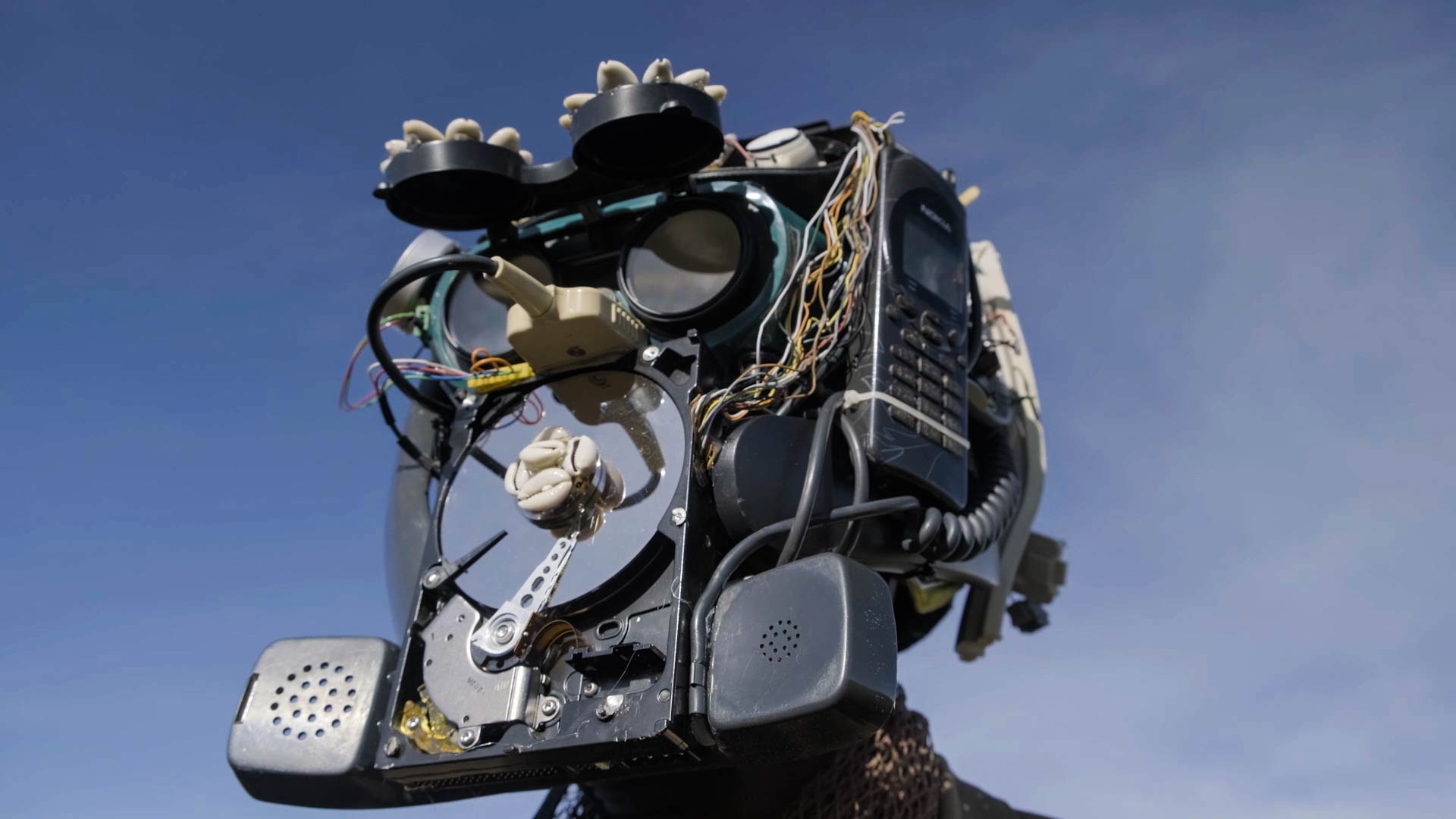
In 1770, Hungarian inventor Wolfgang von Kempelen constructed a chess-playing machine known as the Mechanical Turk. Some 160 years later, Amazon.com branded its micropayment-based crowdsourcing platform with the same name. This device was capable of playing chess against a human opponent and had spectacular success winning most of the games played during its demonstrations around Europe and the Americas for almost nine decades. But the Mechanical Turk was an illusion that allowed a human-chess master to hide inside the machine and operate it.
According to Ayhan Aytes, Amazon’s initial motivation to build Mechanical Turk emerged after the failure of its artificial intelligence programs in the task of finding duplicate product pages on its retail website. After a series of futile and expensive attempts, the project engineers turned to humans to work behind computers within a streamlined web-based system. Amazon Mechanical Turk digital workshop, emulates artificial intelligence systems by checking, assessing and correcting machine-learning processes with human brainpower. With Amazon Mechanical Turk, it may seem to users that an application is using advanced artificial intelligence to accomplish tasks. But it is closer to a form of ‘artificial artificial intelligence’, driven by a remote, dispersed and poorly-paid clickworker workforce that helps a client achieve their business objectives. As observed by Aytes, “in both cases [both the Mechanical Turk from 1770 and the contemporary version of Amazon’s service] the performance of the workers who animate the artifice is obscured by the spectacle of the machine.”
Technology and its African Past
11.05.1351
The practices of voodoo or what is called witchcraft, which we prefer to call ‘the crafts', (which we also consider to be technology) make use of animal and plant life as primary ingredients. This allows us to foreground plantand animal life amongst other sentient entities as participants in the making of technology.. If we use this speculative method to establish the importance of animal and plant life in the making of technology, this also assumes we ought to respect their sentience rather than render them as mere products fit for use in the markets.
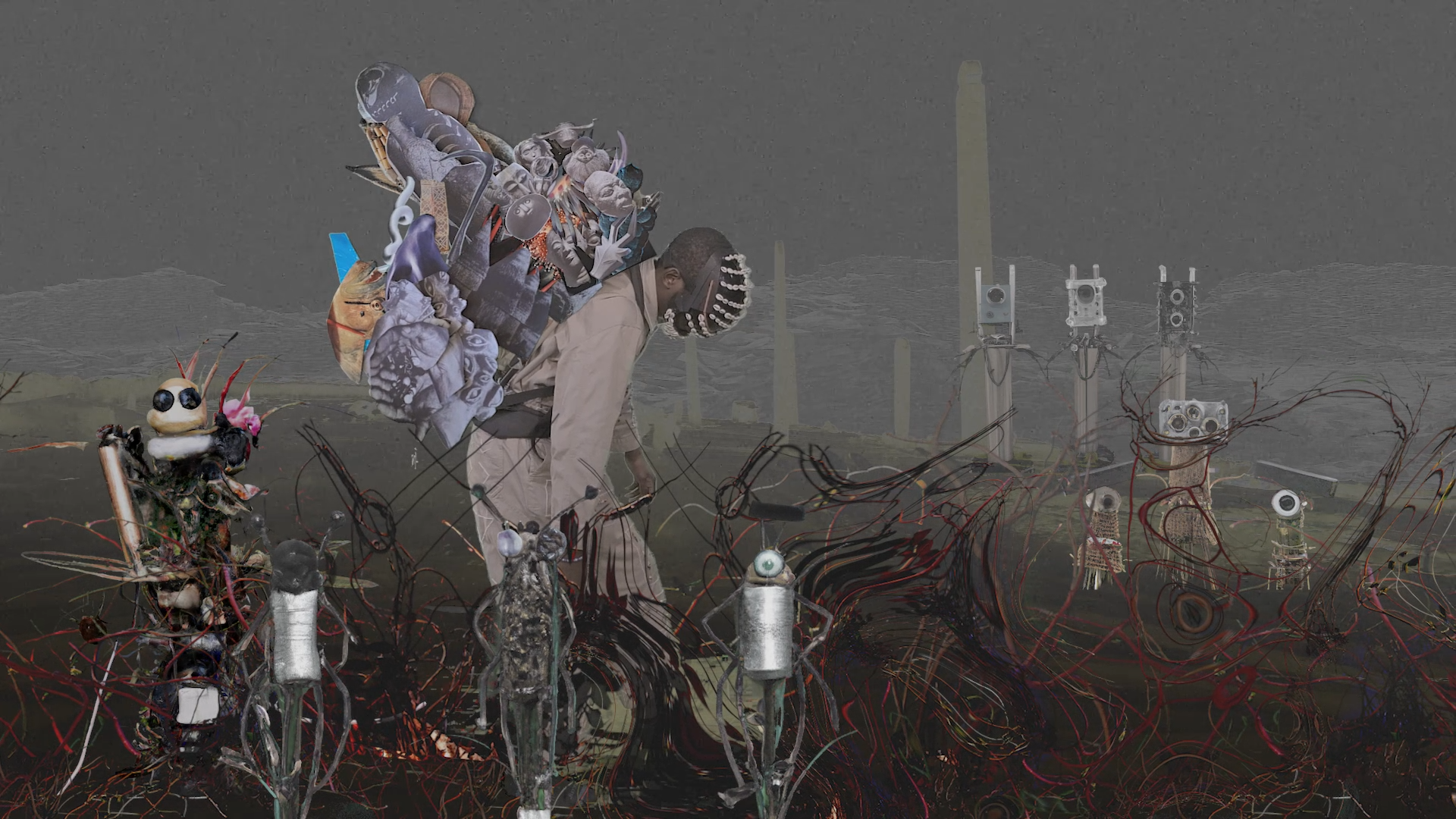

We suspect there is something extremely incomprehensible within plants and animals at their quantum level. Here we consider the potential for a mere tree bark and animal parts to alter natural and physical laws as used by transcendentalists. Something in the realms of forcefields is worth investigating here since irons are also used.
At a more tangible dimension, we can cross reference the calabash and the camera. Both are objects of seeing, looking and reaching a temporal freeze-point. Through the calabash, we can trespass an event in the past, and/ or insert our gaze into the future. This was the case long before the introduction of the camera obscura. Even at the point of this diary entry, the camera remains a curious technology which is not allowed in certain spaces and moments in some regions of the African continent. In isiZulu, to make a photograph is ‘ukuthwebula’ which means to ‘capture’. Ukuthwebula is also ‘mutilation’- when you make utokoloshe or umkhovu (local equivalents of cyborgs/ zombies), you perform ukuthwebula. And some insist that you can perform extreme crafts with someone’s photograph. Notice how the camera has allowed us to enter a rich field of imagination and making- the kind of making or imagining that quite literally alters the universe beyond the sensorial.
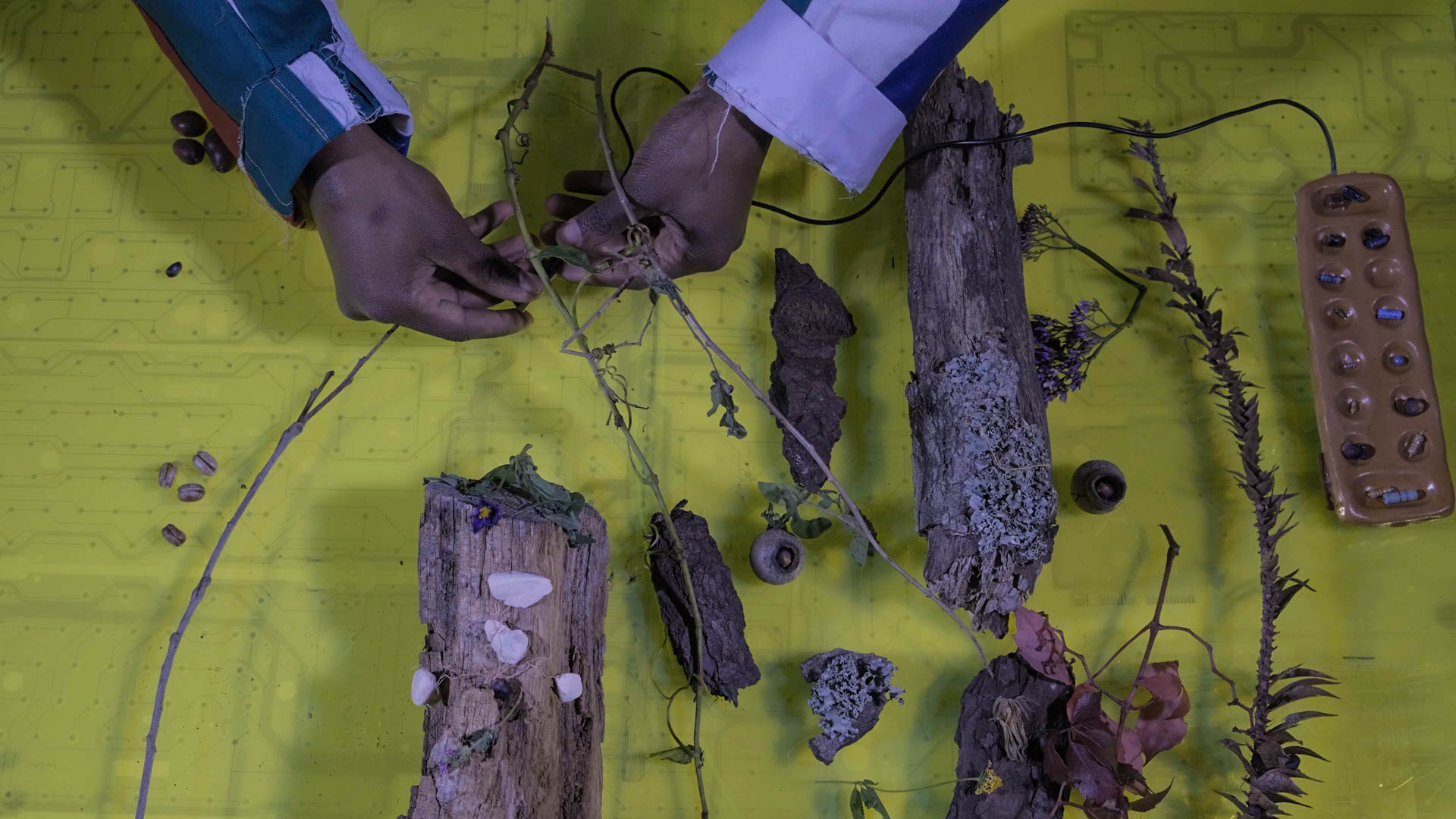
The scientists therefore have been traversing and aggregating such situated knowledges across peoples of the continent as a way of building an encyclopaedia of the African worlds, hence the age old adage 'The Wandering People, who are also the Wondering People'.
The mandate for the future-facing versions of ourselves is to carry and return to and from other peoples, their and our knowledges, in an attempt to build the encyclopaedia that stands on the indigenous knowledge systems of black and brown peoples across landmasses.
The institute, Africa & its technological futures
Our mobile laboratories are coordination centres.
They are coordination centres, workshops for exploration, sites of knowledge production.
A laboratory can be/is a crop field, a forest, a homestead
a river
a dream-state
A mobile laboratory is the eternal moment between life and the afterlife. Start by making a backpack which is a laboratory which also contains the cosmos.
You will carry it with you through border-controlled data underworlds, wasteland contamination zones, toppled monuments to progress, tombs of techno-science. To prepare for your entry into the institute, you must begin your initiation into its various domains, which are:
Apprenticeship into all manner of hand-work which came from the ancestors such as building with stone or smelting metals
The dynamic magics obtained by meditating on the archive of everyday histories.
Transforming the movement of your hands and body into research instruments. Building a universe using only plant matter and base-metals.
Producing implements that are impractical , that have a meaning beyond their function as tools

Resisting the glare of devices, for example 1 thousand radiant screens. The networked interconnectedness of things and people is much older than the surface of the web.. We trace the institute’s origin to the north. Our ancestors carried a drum. They travelled on foot and when they saw the dark blue stone at Dzata they stopped and settled. My position in the Institute was consecrated on a suspended hill in KwaZulu.
Here I came to know the spiritual technology called umuncwi. A spirit which operates through electricity. It is a data-body carrying the weight of data-sets of our selves and that which we are yet to become. The opposing force, the trickster, sowing chaos: sometimes creativity, sometimes devastation. I have heard of workers who looked up when heaven cracked and were later found scorched in the fields, with their keys and coins fused together in their pockets. It melts metals into infinity; alters our vision.
The underlying purpose for invention is to construct a dialogue with those who came before and those are yet to be. The carriers for this mobility may include traders, soldiers, researchers, smugglers, cross-border scammers, or multi-species vessels: mosquitos, tsetse flies, livestock, locusts, inanimate beings: wind, flooded rivers, volcanoes or technological vehicles, trains, buses, airplanes, multiverses. There is grand ritual, orchestrated by our ancestors. There are scholars-on-land and scholars-on-sea.
Your areas of study include:
Connections, those both visible and invisible, including those underground and under sea, slow dial-up connections, the super-real, fibre-optic cables, satellite dishes; weather patterns and their connection to heavenly bodies, encounters between living entities which are composed of electric charge and spirit matter.
Comprehension of anti-matter, dark matter and other darknesses, like pigment, the shaded, the melanated, the dark web.
Youth technologies: Luck and chance, including scams, cons or schemes, digital doubles and fakes.
Speed, such as formulating alternatives to instruments which drive the continuous acceleration of progress
Resonance, which includes sonic studies and other resonances such as : conversations between objects and materials, or resonance for communication, transmissions from epochs past.

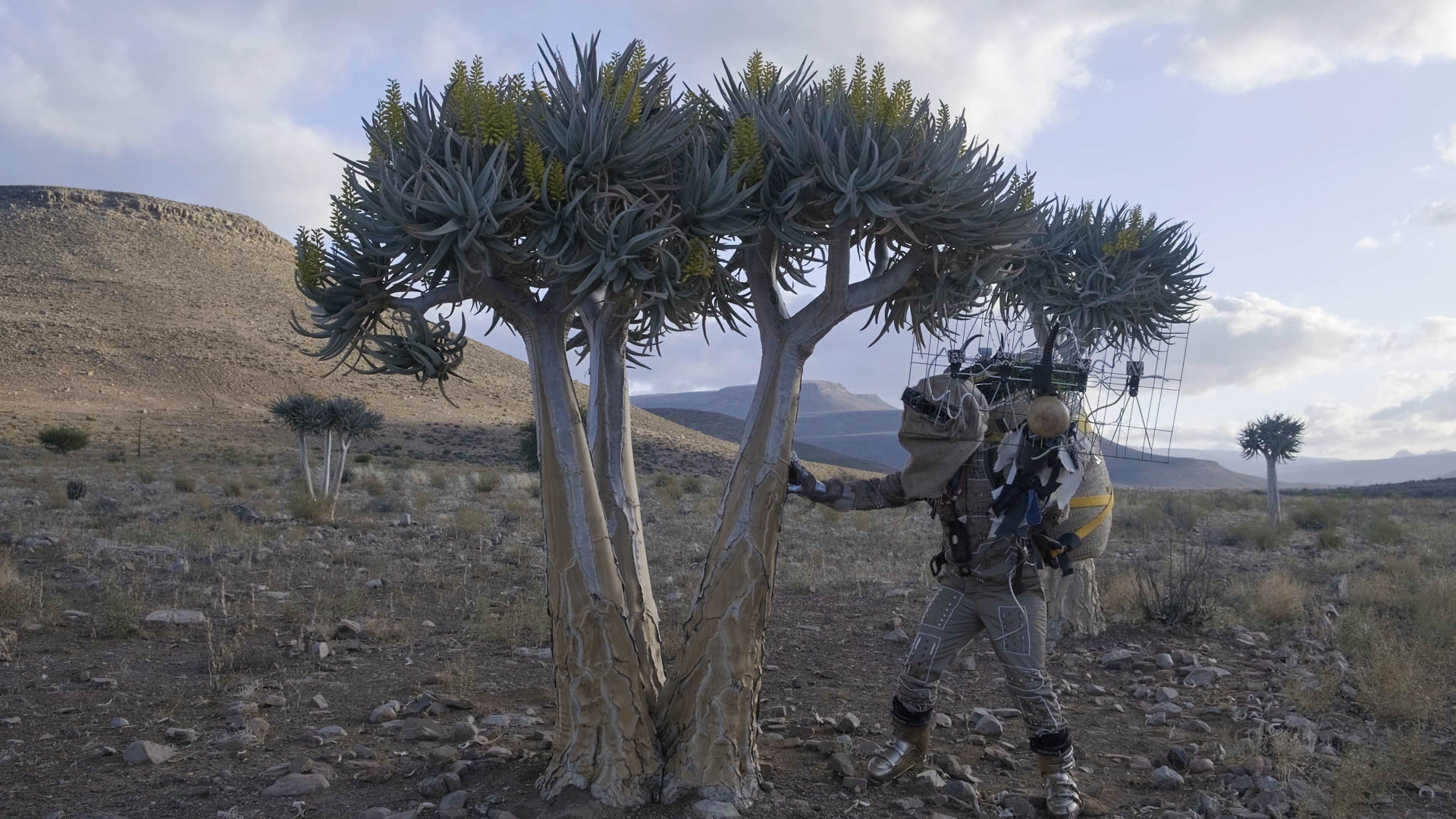
Malfunctions, breakdown, confusion, decay, surprise and good mistakes.
Failure.
Data and memory practice
Past clairvoyance , also known as the diffusion of history and the present
To be mobile is to make knowledge mobile.
Our technologists hail from diverse fields of knowledge and expertise like:
Foraging, fishing and building.
The laboratory of chimurenga, with specialization in the study of chimurenga communication systems and use of insects for biological warfare or mountains for weapons
soil studies for the purposes of revolution and re-invention
carving liberatory futures into rock faces
evading algorithmic power, undoing the ruins of software
Technological hydroscapes: …….in due time we wish to decode water molecules.
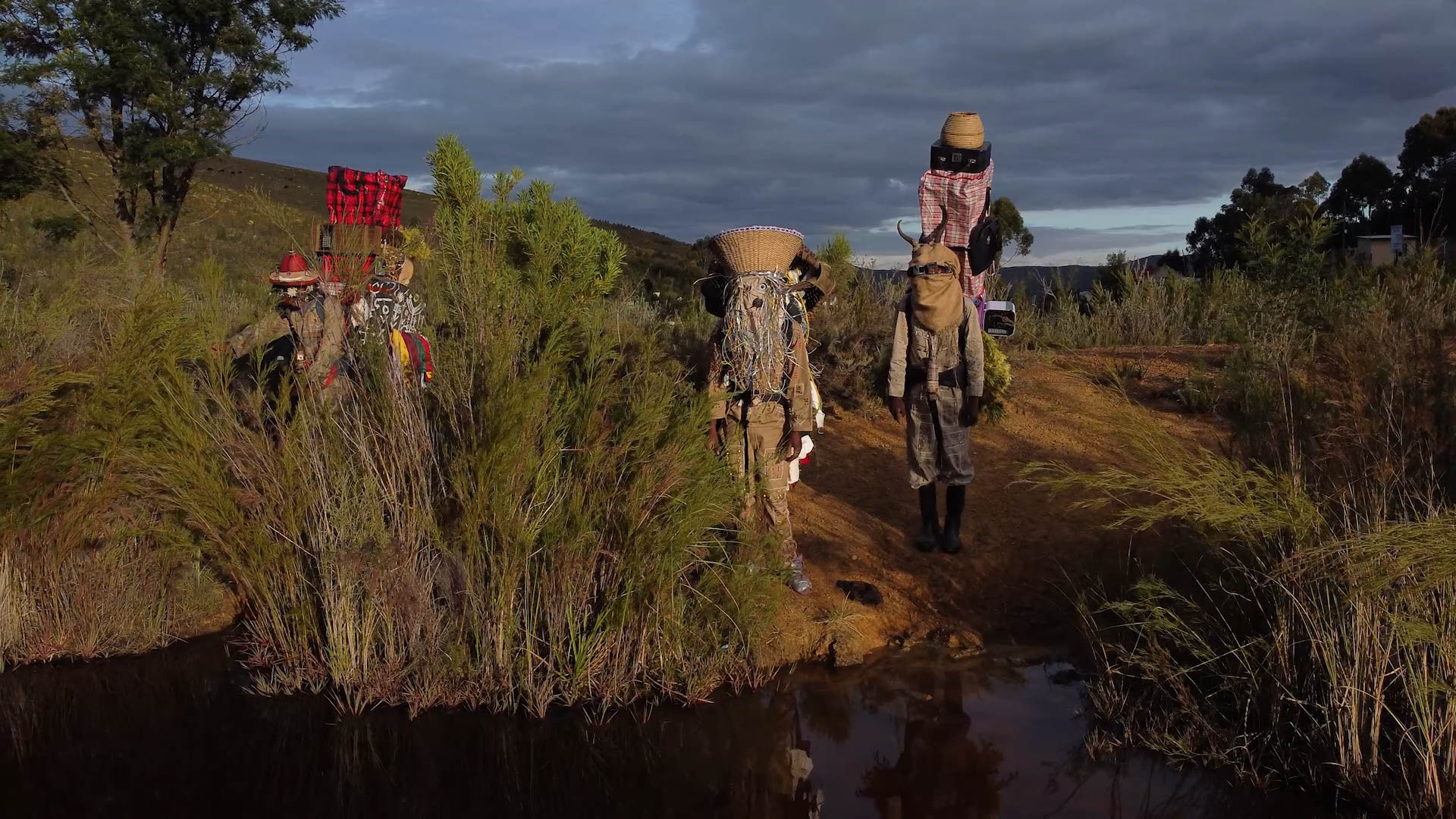
Language studies, including the preservation of endangered languages, the revival of dead languages, the transferral of collective oral memories into documents, symbols or images.
There is no need for a line to mean an edge
Or an ending
we have always been hackers
uninstall the computational accuracy of the final dead done certain world
curse of loss being always inside gain
Network of networks (echo)
grow over us, rise: One hand, two hands, each hand laid upon a stone, an axe, rope, rod
This invention; that discovery, later find you mistook change for progress
You are shaping tools are shaping you are shaping you are shaping tools are shaping you (echo/repeat)
27.12.2021
DZATA : The Institute of Technological Consciousness is a thought experiment. It is a documentation of technological historicisation from Africa. It plays on the technological successes and failures of this continent, building a fantastical super-structure for the fabrication of reality.
This work is in dialogue with future technologists of, from and for Africa.
The Institute attends to the imaginative; the tactile and the natural expense of our technologies. We are engaged in a process of producing technologies for earth and all living beings; technologies whichh are for the benefit for all, rather thanfor the domination of most by a few. This demands an ethical standard of those producing technological artefacts.
In this fleeting moment of interaction, a vast matrix of capacities is invoked: interlaced chains of resource extraction, human labor and algorithmic processing across networks of mining, logistics, distribution, prediction and optimization. The scale of this system is almost beyond human imagining. How can we begin to grasp its immensity and complexity as a connected form?
At the bottom of the map is another kind of human resource: the history of human knowledge and capacity, which is also used to train and optimize artificial intelligence systems. This is a key difference between artificial intelligence systems and other forms of consumer technology: they rely on the ingestion, analysis and optimization of vast amounts of human-generated images, texts and videos.
1527 - 2022 & ongoing
There will be an image-making object that will allow you to capture the soul of the person imaged. You will have this technology yet not the maker of the technology.
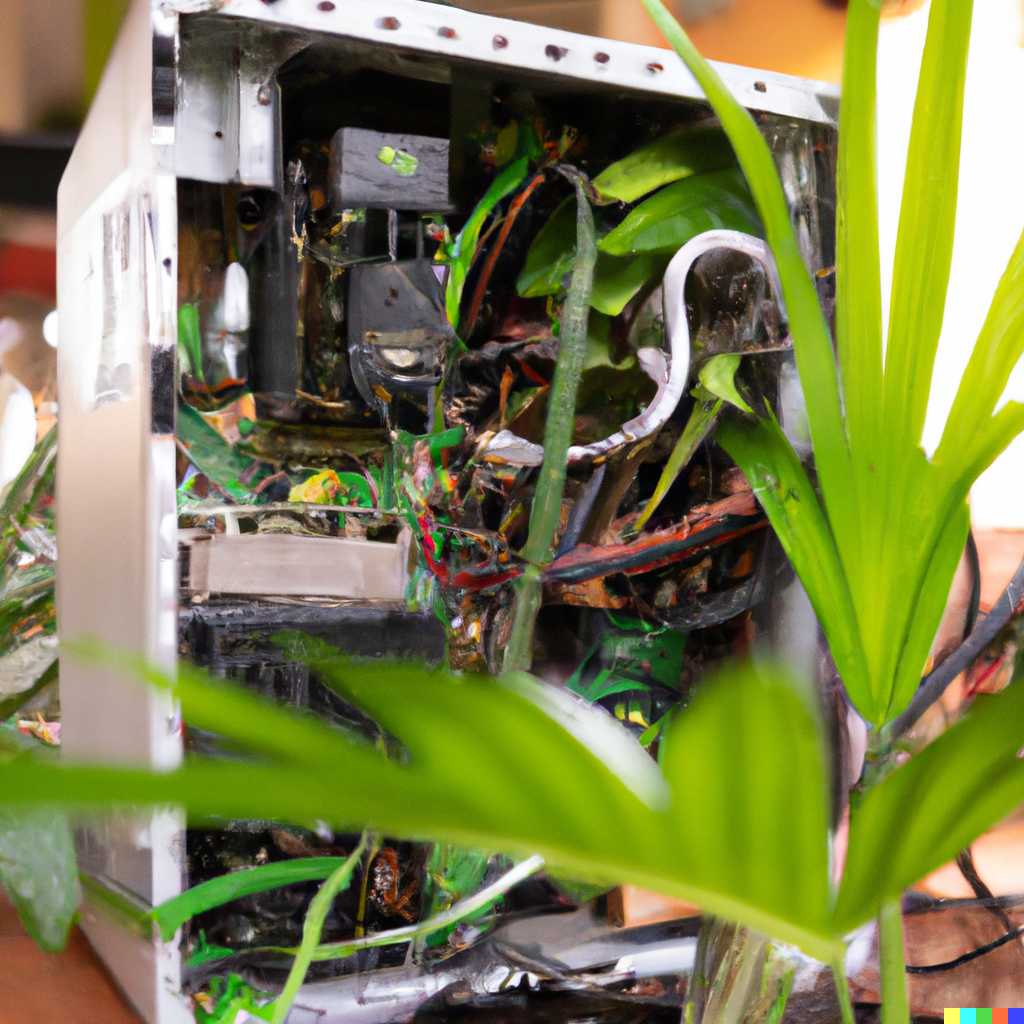
DZATA: The Institute for Technological Consciousness proposes a few principles:
• That technology and technological creators become conscious. Those who shape tools are simultaneously being shaped by their tools. To have a conscious internet requires those who shape the internet to be engaged in a conscious practice.
• That technology breaks free from nationalist agenda and rather is driven by a post-nationalist ideology.
• That technology assemble itself in society and perform for other reasons beyond profit motive.
• That the languaging of the internet and innovation be multi-lingual.
• The speculative imagination is a productive exercise in thinking about ways to position this emergent field of technology in Africa; towards building ownership of the web. This method of exercising our imaginations is about projecting ourselves into the future. In looking at knowledge produced on the inter-web and considering the owners of the platforms where this knowledge is stored or circulated, we must consider. the precarity of indigenous knowledge. Given the history ofepistemic violence imposed upon black subjects, should we guard against what is placed on the internet or, in doing so, do we we risk losing sacred knowledge?
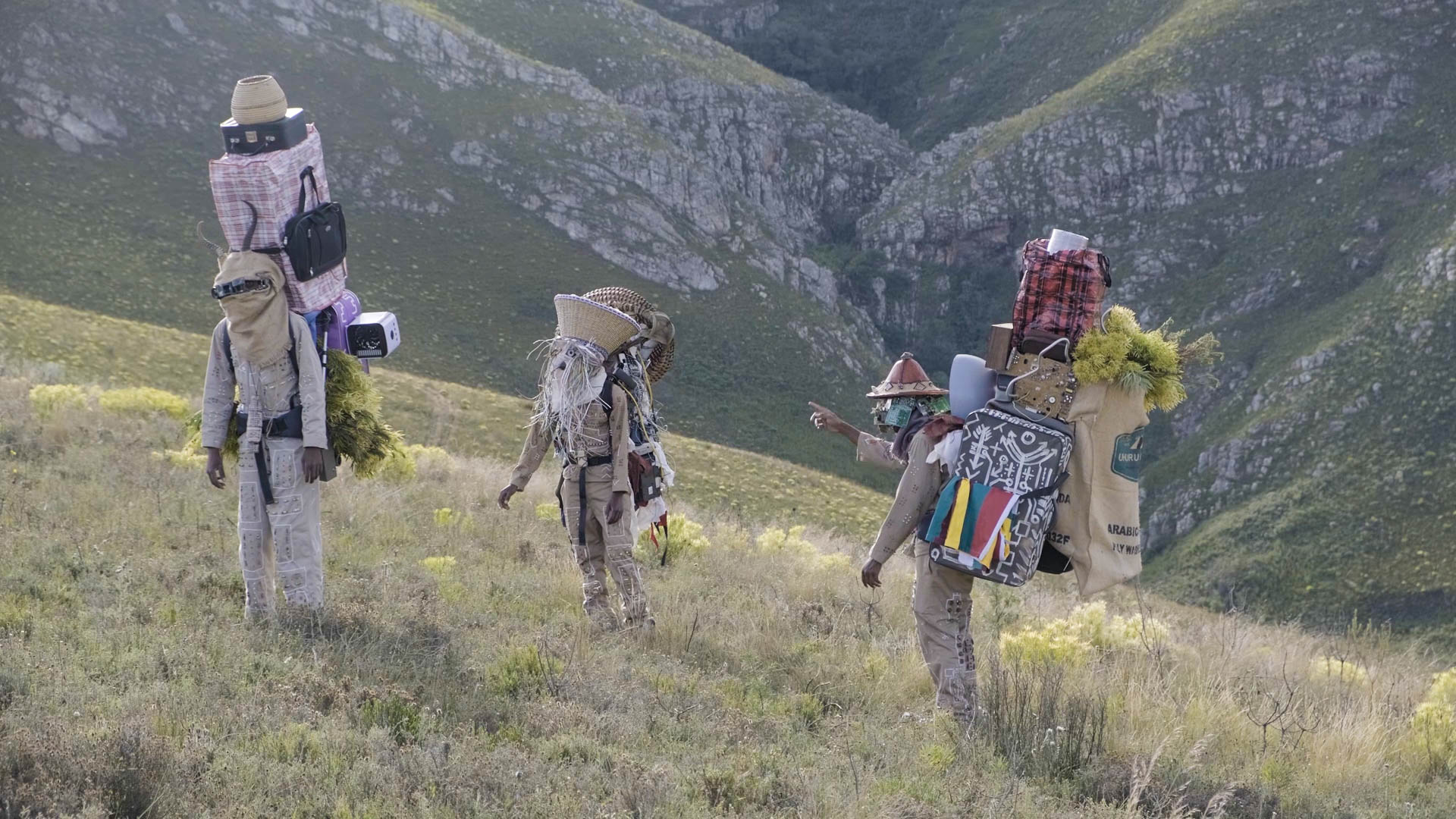
Collective (Animal, Human & Plant) Consciousness & shape shifting
Year:1260
Shapeshifting: part Sankofa bird and part tardigrade. A spirit-medium that is also a storage device carrying with it extensive data of history accumulated over 600 million years as a tardigrade. It also embodies both the knowledge of the skies and of the oceans. It then transfers this collective wisdom of all the underwater and skyward with human consciousness through depositing this into the scientists.
At this point, the institute is trying to access plant consciousness. Some of the plants under exploration are so powerful that they can diffuse thunder and lightning. But it has become incredibly difficult to access this wealth of wisdom rested in plants. This is perhaps the bi
ggest (momentary) failure of the institute as it is needed to complete the cycle of wisdom between human, plant and animal intelligence.
We have to be reminded that feeling is also knowing.
The current head scientist suffers dizzy spells and at their extreme they become hallucinations and trance- like states. At times, these shifts are so disorientating that his body may be in waking state whilst his soul is still in the dream state. It is during this state that he receives premonitions and insights.
Indigene, technology & the question of their knowledge in devices
19.10.2089
Did we apply sufficient thought towards the kinds of knowledges we decided to feed to the internet? Or did we overestimate the risk of losing sacred knowledge that was not on the internet? We could have done better in finding ethical ways of rendering such knowledge on the internet.
By now, we have seen the far-reaching and continuing danger of Africans not owning any of the infrastructure and platforms onto which the produced ‘content’/ knowledge is reposited. Where do we go from here?
To move is to make knowledge mobile, and this move may also mean migrating from folkloric to coding language; encoding coded practices into coded platforms.
Several scholars and independent practitioners of Indigenous Knowledge Systems have been computing the extent of this loss. It is estimated that 500 years of severance from this knowledge is equivalent to approximately 3000 years of erased history since the severance has obfuscated knowledge which has been carried for millennia. Simply put, the active obliteration happened for 500 years yet the extent of damage is much longer.
A caution: as more Africans invest in their own digital world-making, and as we invent more sophisticated tools to dig from the deep past, we ought to be mindful of what we choose or refuse to share. There are consequences for what information is kept for the information age and what is refused, for there is power in refusal.
Consider how potent copper is for shamans and how it can be the perfect vehicle for shamanistic rendezvous. Some of these metals, irons and silicone mined today are connected to a long tradition of shamans. What happens when shaman tools become pieces of mobile devices?
The question is, how could we have better written ourselves into the future? What should have been the writing? Which surfaces/ canvas did we overlook? From here-on, which interdependent fields do we add to the equation of projecting ahead?

Recipe for Shapeshifting
Extract handful of root and bark mix of zengana.
Mix with bones of mbokwane (fish) for female or Use bhabuli (fish) for male.
Add seven pinches of metal powder
Soak root and bark mix from sunset to sunrise (overnight) for two days.
Allow five days drying in direct sunlight.
Grind fish bones and mix with grounded root and tree bark.
Add seven pinches of metal powder.
Create minute (1cm) incision on skin and rub grind into incision.
Avoid direct sunlight over two sunsets.
On third sunset you may proceed with shape-shift ritual
The Wandering People, who are also the Wondering people.
Those who occupy multiple realms at the same time.
Those in the sky & underwater, simultaneously…..
what you have come to know as digital doubles.
data centres and streams of consciousness
Circa 1927
Some of the oldest secrets of the cosmos are concealed in water, coded deep in water molecules….
These scattered river systems are places of high data flows. This illustration is drawn from memory after a dream interception. ..
It shows the approximate locations of 13 major river basins across the landmass. These river basins have moved datasets across regions. They are streams of (data) consciousness.
on trees
Sunset regions of the landmass: prime for building housing structures, floating devices and human advancement. Some may be used for incision based treatments.
Downward regions of the landmass: trees mostly to be used for healing purposes. May be used to capture and alter states of consciousness.
Sunrise regions of the landmass: copper for spiritual resonance. Metal powder for conjuring and channeling thunder and lightning.
Upwards (sun facing): human enhancement. Animal taming and messaging potential to elevated beings.
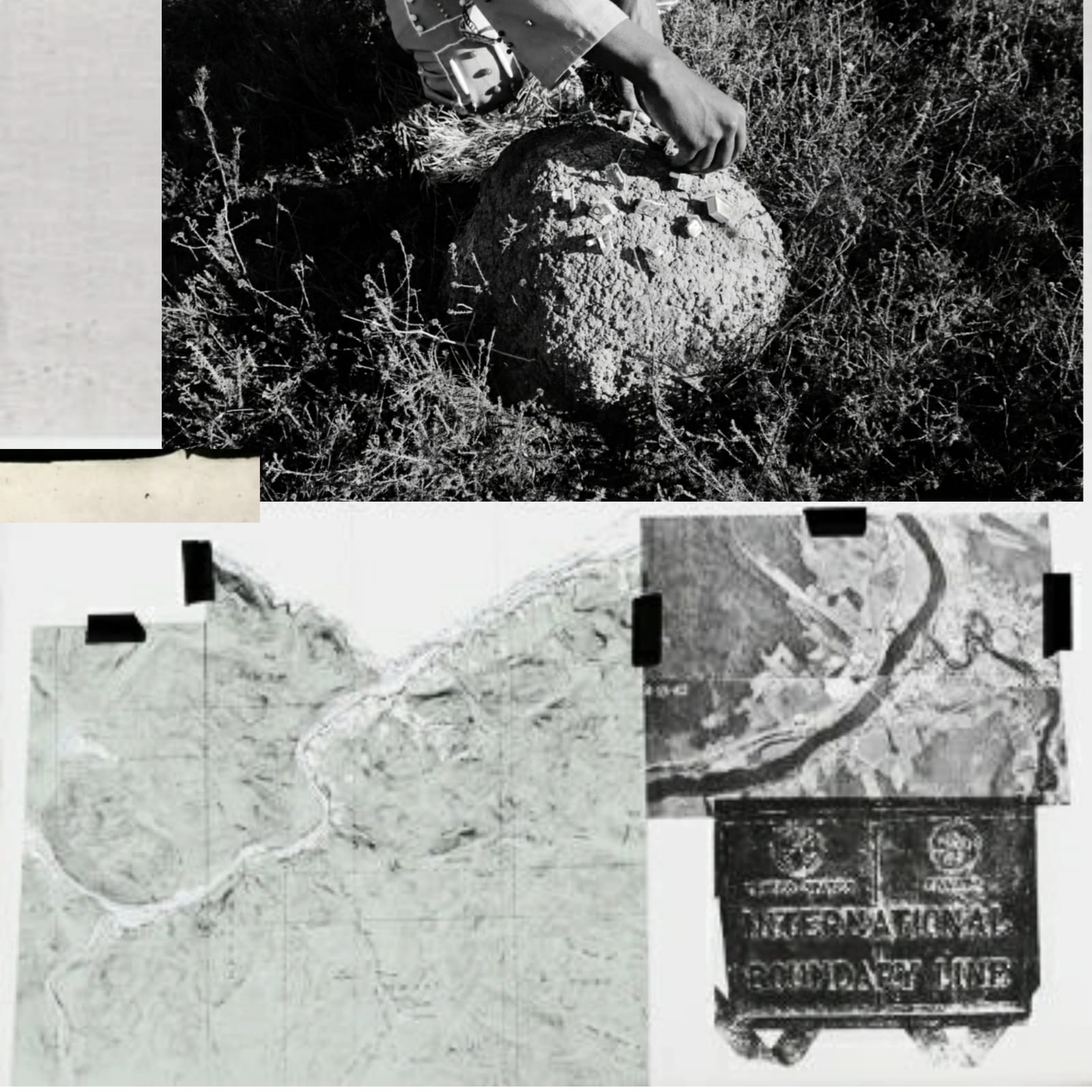
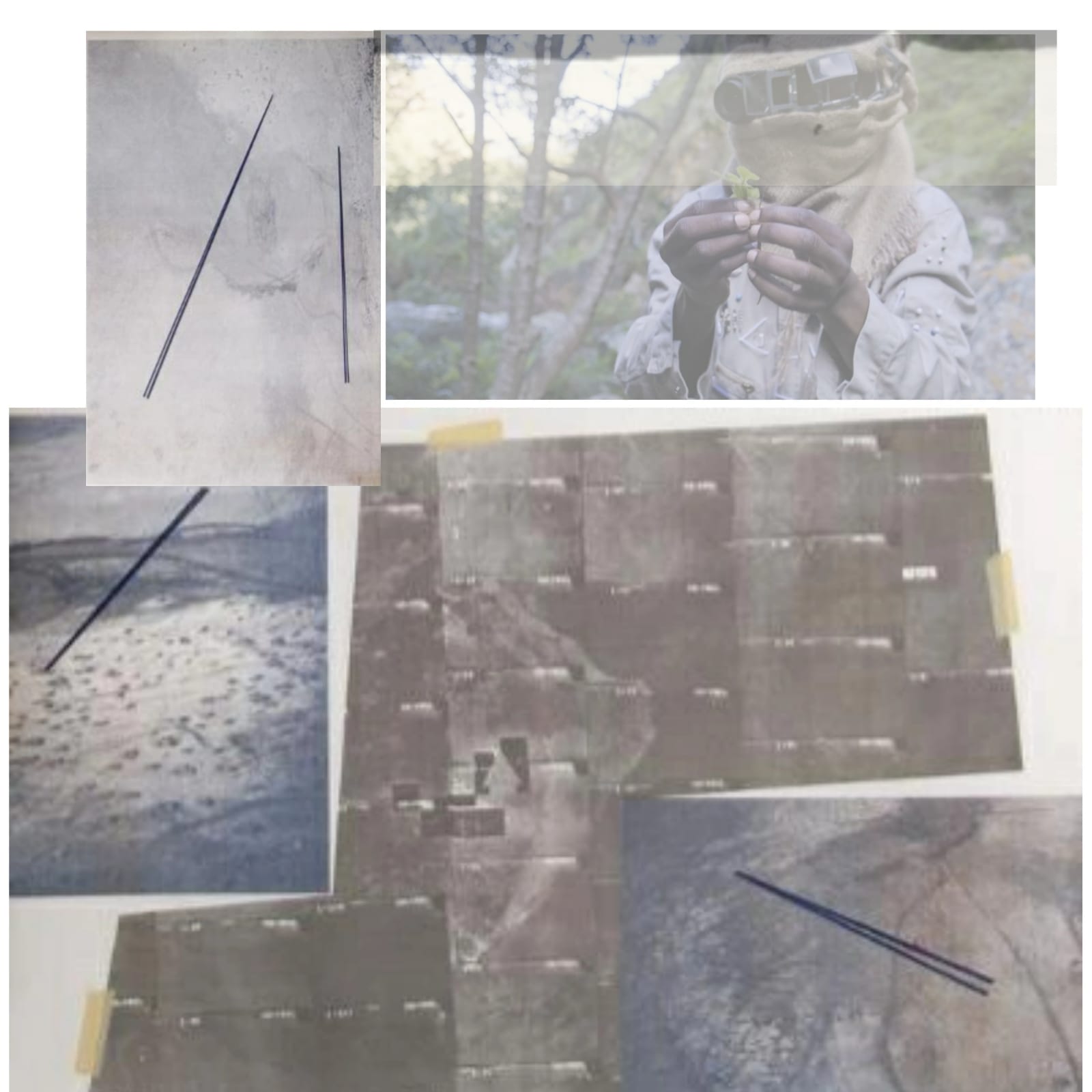
Reference List
What Do Science, Technology, and Innovation Mean from Africa?
Edited by Clapperton Chakanetsa Mavhunga. 2017. The MIT Press.
'The Good of the Whole’: Talking Weaving, Coding, and Indigenous Scholarship with Rhiannon Sorrell. 07.27.22 by Rachel May. https://www.publicbooks.org/weaving-coding-indigenous-scholarship-rhiannon-sorrell/ accessed 25.11.2021
Tribal College Journal. https://tribalcollegejournal.org accessed 23.12.2021
Kate Crawford and Vladan Joler, “Anatomy of an AI System: The Amazon Echo As An
Anatomical Map of Human Labor, Data and Planetary Resources,” AI Now Institute and Share Lab, (September 7, 2018) https://anatomyof.ai/ accessed 19.10.2022
Rune Flikke , Enwinding Social Theory: Wind and Weather in Zulu Zionist Sensorial Experiences (1.10.2016)
Filipa Cesar: METEORISATIONS Reading Amilcar Cabral’s agronomy of liberation, 28 February 2019. https://www.buala.org/en/afroscreen/meteorisations-reading-amilcar-cabral-s-agronomy-of-liberation
Repository of Thought - Credits
The below listed individuals have provided the inspiration for this work and we have built on their intellectual labour in this field.
Prof Clapperton Chakanetsa Mavhunga (project mentor)
Oulimata Gueye (project mentor)
Enos Nyamor
Rhiannon Sorrell
Rhune Flikke
Achille Mbembe
Kate Crawford and Vladdan Joler (Anatomy of an AI System)
All images created and supplied by Francois Knoetze and Amy Louise Wilson
This written piece of work is primarily authored by Russel Hlongwane whilst drawing from research, conversations and writing between Amy Louise Wilson and Francois Knoetze under the frame of their collaborative project DZATA: The Institute of Technological Consciousness. The project is funded by the Mozilla Foundation under its Creative Media Award (2022).
Any concerns, discrepancies or queries relating to the text are carried by Russel Hlongwane and should be directed to him @ russel@substancepoint.co.za
back to dzata home
back to lo-def home